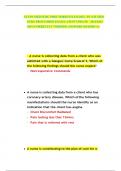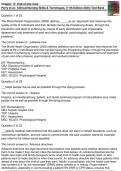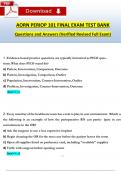Exam (elaborations)
Solution Manual for Financial Accounting 11th Edition Robert Libby, Patricia Libby, Complete Chapters 1 - 13, Verified Newest Version
Solution Manual for Financial Accounting 11th Edition Robert Libby, Patricia Libby, Complete Chapters 1 - 13, Verified Newest Version CHAPTER 1: Financial Statements and Business Decisions Focus Company: Le-Nature’s Inc. CHAPTER 2: Investing and Financing Decisions and the Accounting System...
[Show more]












